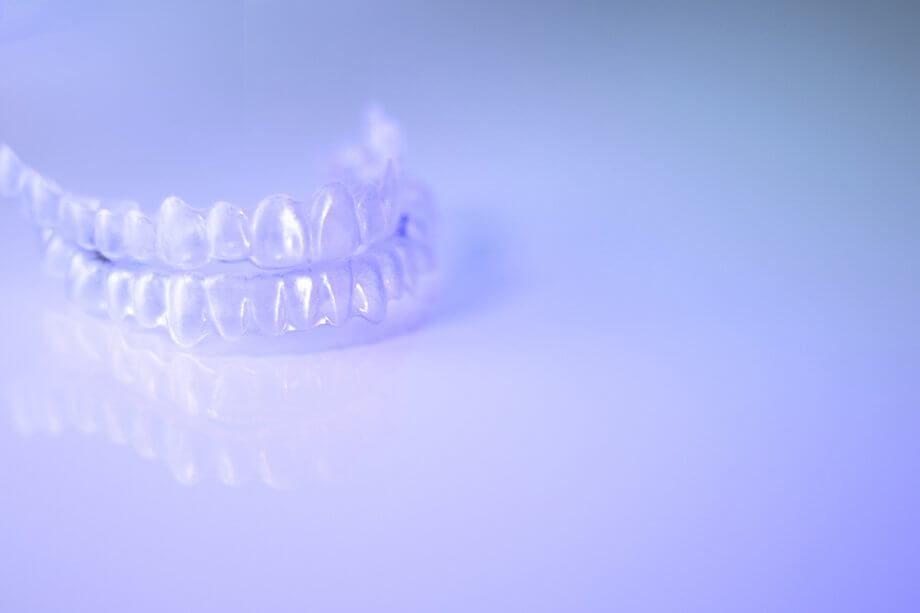Invisalign® is a convenient, highly effective orthodontic system that can treat misaligned teeth and restore a healthy, brilliant smile. Without the hassle of braces, Invisalign can bring your teeth into beautiful alignment while protecting your oral health.
Like any treatment, Invisalign has pros and cons. This blog will explain in detail the advantages and disadvantages of this orthodontic system and help you make an informed decision.
Pros of Invisalign:
Discretion
One of Invisalign’s most significant advantages is that it enables patients to keep their orthodontic treatment private. Clear aligners do not attract unwanted attention, and most friends and family will not notice them at all.
Comfort
With no wires, brackets, or sharp edges, Invisalign is the best choice for comfort. The clear medical-grade plastic aligners fit smoothly against soft oral tissues. Becoming accustomed to wearing Invisalign takes only days, and there are no uncomfortable adjustment appointments.
Speed
Most Invisalign patients complete treatment in about 12 to 18 months, while braces may take as long as 3 years, depending on the complexity of their needs.
Convenience
Invisalign treatment requires fewer orthodontic visits than traditional braces. Patients change their aligners every one to two weeks and visit the doctor approximately once every six weeks for a checkup.
No Food Restrictions
Braces wearers often feel annoyed by having to avoid their favorite foods. Invisalign comes out when patients eat or drink, so they can have anything they like as long as they keep their teeth and aligners clean.
Easier Care
Since Invisalign comes out, patients can effortlessly brush and floss. The aligners are also easy to clean, using branded cleaning crystals or mild antibacterial soap. Patients need not struggle with floss threaders or other assistive devices.
Improved Oral Health
Cleaner teeth mean lower chances of tooth decay and gum disease, which can sometimes be an issue for braces patients. Invisalign also improves oral health because straighter teeth collect less plaque and tartar.
Cons of Invisalign:
Cost
Invisalign is a premium solution, and its convenience may translate to a higher out-of-pocket cost than braces.
Requires More Responsibility
Invisalign patients need to engage more with their orthodontic treatment than braces patients, meaning that Invisalign is appropriate for older teens and adults. Keeping track of aligners and avoiding damaging them can be a challenge.
Must Wear 20-22 Hours Daily
Patients must commit to wearing their aligners at all times, except when eating or caring for their teeth. If patients forget to put their aligners in, their treatment may stall or reverse.
Must Remove to Eat or Drink
Some patients find it difficult to remove the aligners, find a safe place to keep them and replace them after a meal. Always keep your aligners in their case when they are not in your mouth.
Fewer Treatment Options than Braces
Braces are more versatile than Invisalign, allowing for more types of orthodontic correction. If a patient has significant bite issues or needs extensive work, traditional braces could be a better choice.
Guiding Your Invisalign Decision
Selecting between Invisalign and other orthodontic treatments can be challenging. Not every patient is a good fit for clear aligner treatment.
Patients who need orthodontic correction should research their options while considering the pros and cons. Weighing your needs, requirements, and lifestyle can help you make your decision. Speak to a qualified orthodontist to resolve your questions and receive optimal treatment.
Frequently Asked Questions About Invisalign Treatment
Does Invisalign hurt?
Invisalign is considerably more comfortable than traditional braces. The aligners are smooth to the touch and lack sharp edges, so they do not irritate lips, gums, or cheeks. Teeth move gently and gradually without painful adjustment appointments. You may experience short-lived discomfort when you switch to a new set of aligners every one to two weeks.
If I have an overbite, can I receive Invisalign?
Invisalign is an excellent choice for mild to moderate overbites. A qualified orthodontist can add tooth-colored “buttons” and elastic bands to Invisalign treatment to correct overbite, underbite, and crossbite. However, a severe bite problem may require other therapies.
Call Greater Hartford Orthodontics
When considering orthodontic treatment, it pays to know the pros and cons of each treatment. Our orthodontic experts can help you select your ideal treatment based on your needs. Please call our Newington, CT, office at 860-667-8277 to schedule a consultation today.

